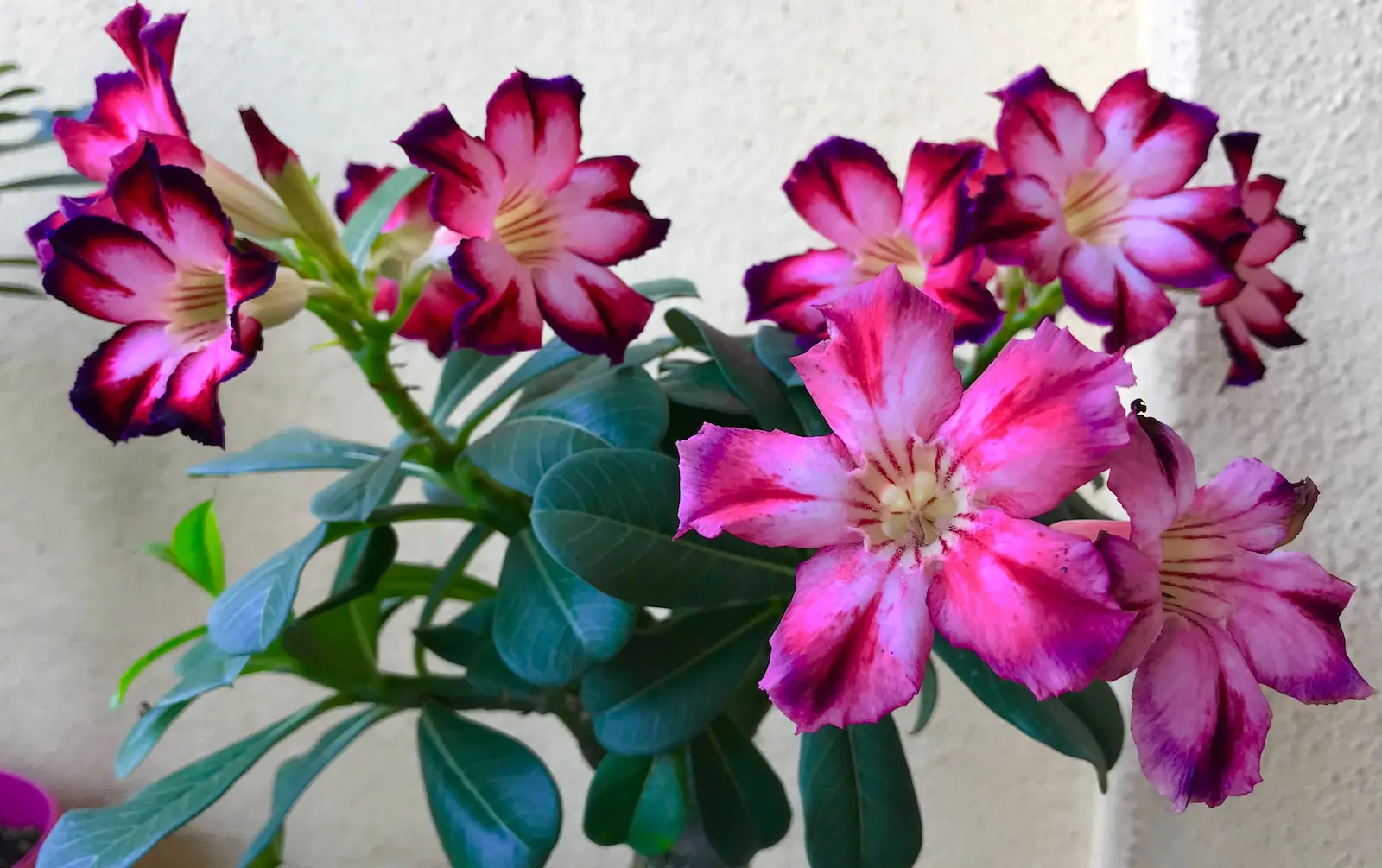Desert Rose, a stunning succulent, is native to arid regions of Africa and the Arabian Peninsula. Its striking appearance, characterized by a thick, swollen stem and vibrant flowers, often resembles a miniature tree. The swollen base, or caudex, functions as a water reservoir, enabling the plant to thrive in dry, harsh conditions. Its flowers, resembling those of a true rose, come in shades of pink, red, white, and yellow, adding allure and elegance to this hardy plant.
Also known as Adenium obesum, Desert Rose’s growth habit and beautiful blooms have made it a favorite among succulent enthusiasts and collectors. Despite its desert origin, it is adaptable to various environments, including indoor cultivation. However, it requires specific care, especially in non-native regions, to maintain its health and promote blooming.
The Desert Rose is more than just an ornamental plant; it has cultural and medicinal significance in some of its native areas. The sap of the plant has been used for both medicinal purposes and as a component in arrow poison. Its unique appearance and ability to thrive in tough conditions symbolize resilience and beauty, making it a meaningful addition to many gardens and landscapes.
| Attribute | Details |
|---|---|
| Common Names | Desert Rose |
| Botanical Name | Adenium obesum |
| Family | Apocynaceae |
| Plant Type | Succulent |
| Mature Size | 3-6 feet tall |
| Sun Exposure | Full sun |
| Soil Type | Well-drained, sandy soil |
| Hardiness Zones | 10-11 |
| Native Area | Africa, Arabian Peninsula |
Desert Rose Care
Desert Rose is relatively low-maintenance but requires careful attention to certain aspects of its care. It needs a sunny location, well-draining soil, and moderate watering to thrive. Overwatering or inadequate sunlight can lead to poor growth and susceptibility to diseases.
Because it’s a slow-growing plant, patience is key when cultivating Desert Rose. It might take several years for a young plant to develop the prominent caudex and flowering capacity that make it so attractive. In regions with cold winters, bringing the plant indoors or providing proper insulation is essential, as it cannot tolerate freezing temperatures.
Light Requirement for Desert Rose
Desert Rose thrives in full sun and requires at least 6 hours of direct sunlight daily. Insufficient light can result in weak, leggy growth and reduced flowering.
Soil Requirements for Desert Rose
A well-draining, sandy soil is essential for Desert Rose. Using a cactus or succulent soil mix, or adding sand or perlite to standard potting soil, will help prevent waterlogging.
Water Requirements for Desert Rose
Moderate watering is necessary for Desert Rose, especially during its growing season. Allow the soil to dry between waterings, and reduce watering in the winter months to prevent rot.
Temperature and Humidity
Desert Rose prefers warm temperatures and low humidity. It can tolerate high heat but must be protected from freezing temperatures. If grown indoors, ensure proper air circulation to mimic its natural, arid environment.
Fertilizer
During the growing season, a balanced, water-soluble fertilizer can be applied every two weeks to support growth and flowering. Avoid over-fertilizing, as this may lead to weak, sappy growth.
Pruning Desert Rose
Pruning is often necessary to shape the plant and remove dead or diseased growth. It can also encourage a more branched appearance. Always use clean, sharp tools to prevent infection.
Propagating Desert Rose
Desert Rose can be propagated through seed or cuttings. Cuttings should be allowed to dry for a day before planting, and seeds require warm, well-lit conditions to germinate.
How To Grow Desert Rose From Seed
Planting Desert Rose from seed can be a rewarding process. Use fresh seeds, a well-draining soil mix, and provide warmth and light. Patience is essential, as germination can be slow.
Common Pests & Plant Diseases
Aphids and Mealybugs
These pests can be controlled with insecticidal soap or neem oil.
Root Rot
Often caused by overwatering, root rot can be prevented by using well-draining soil and careful watering practices.
Common Problems With Desert Rose
Yellowing Leaves
Often a sign of overwatering, yellowing leaves require adjusting watering practices and ensuring proper soil drainage.
Lack of Blooms
Inadequate sunlight or incorrect watering can lead to a lack of flowering.
Pro Tips
- Provide plenty of sunlight to encourage blooming.
- Avoid overwatering; let the soil dry between waterings.
- Consider repotting every 2-3 years to refresh the soil and inspect the roots.
- Keep an eye out for pests, and treat as needed.
- Prune to maintain shape and encourage branching.



